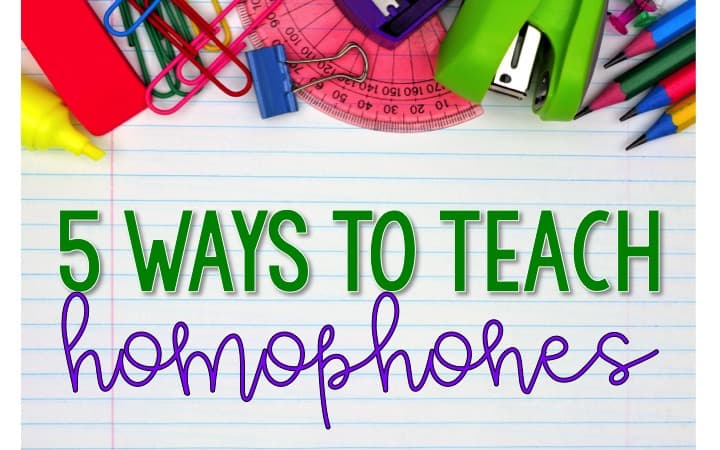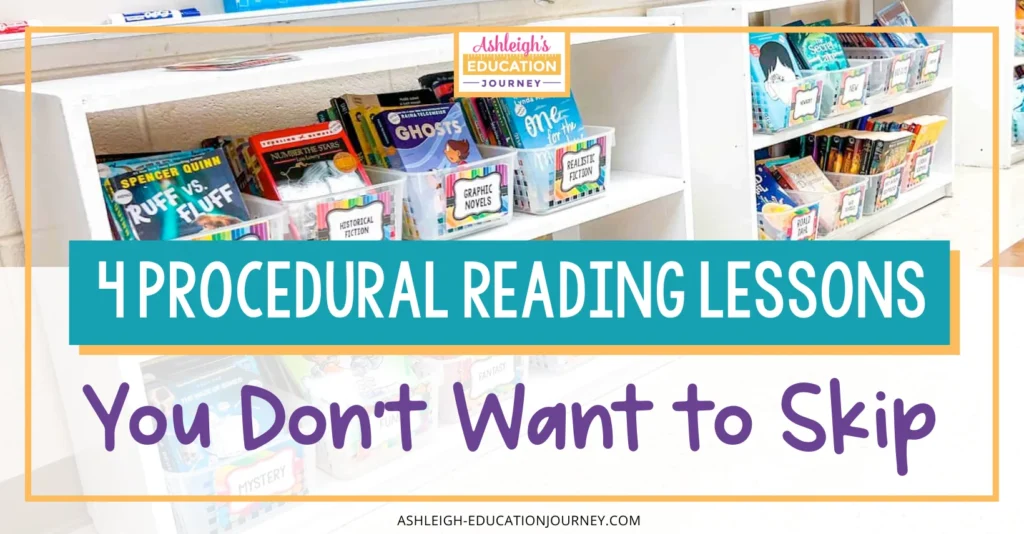
This shares 4 procedural reading lessons you don’t want to skip. At the start of the school year, it can be challenging to find your groove. Thankfully, it doesn’t take long to get back into the routine.
It can also be difficult to find your starting place teaching reading. Your first few lessons of the school year are building toward your “normal” reading lessons. This post focuses on how to get started with your upper elementary reading lessons.
Guidelines of Reading Workshop
My first reading lesson of the year is Guidelines of Reading Workshop. This is typically a refresher lesson for most students, but it’s always a good review. It’s also nice to have common terminology with students. Since I teach this on the first day of school, it’s a short and sweet lesson. I follow it with a class read aloud First Day Jitters.
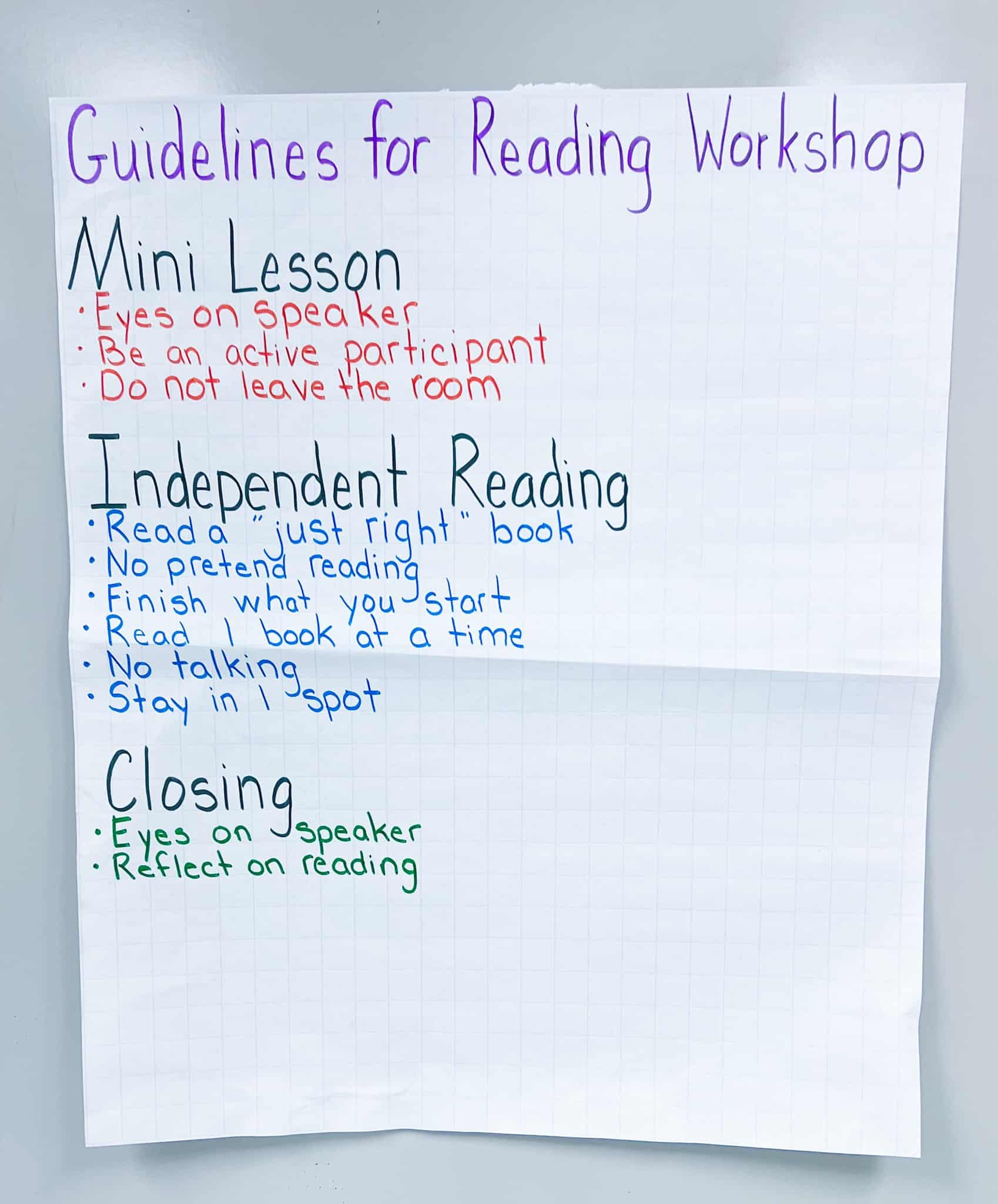
How to Choose a Book
On the second day of school I teach students how to choose a book and eventually let students choose their own book.
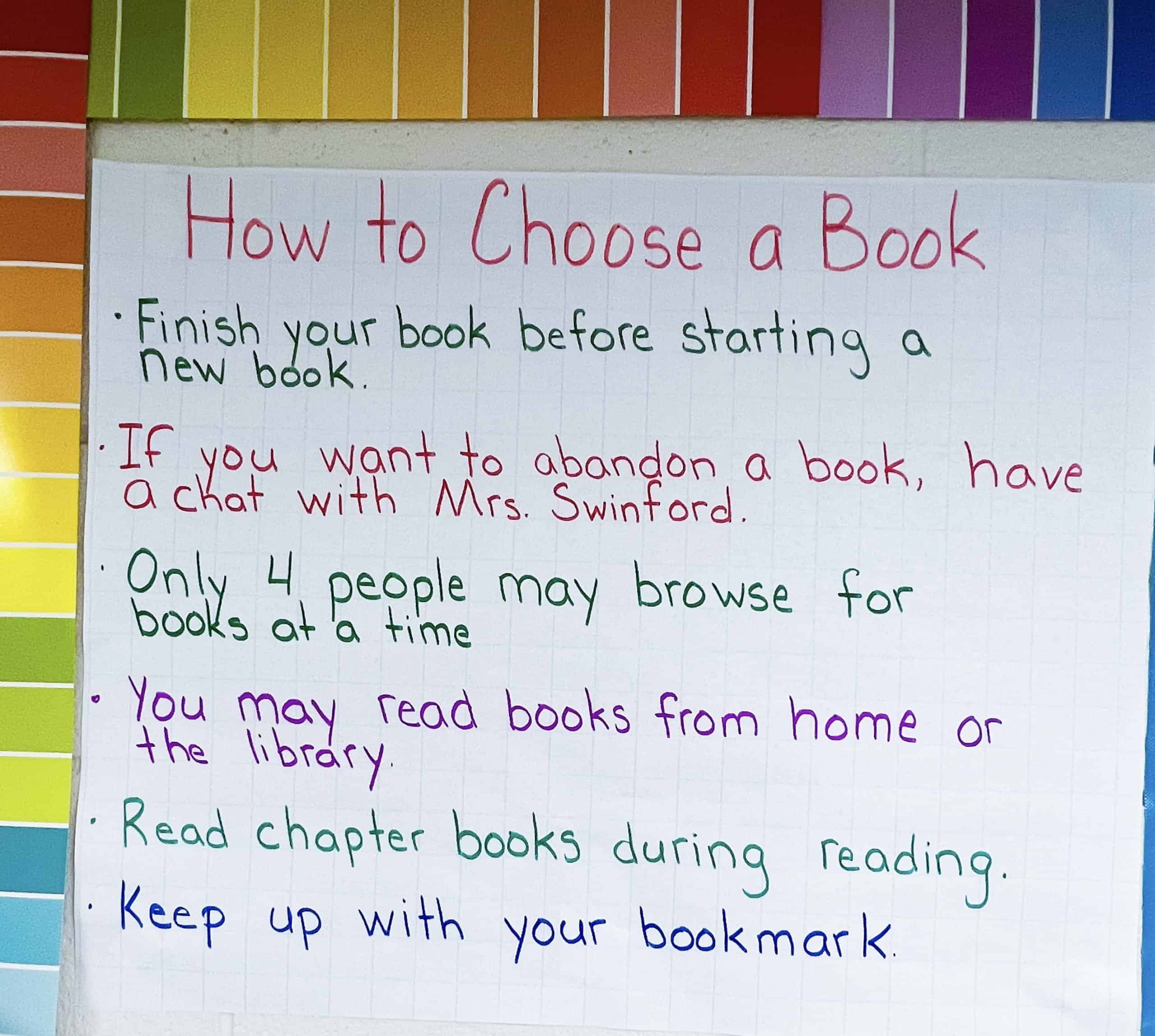
Show students how your classroom library is organized and explain the procedures in selecting a book. My procedures are: 1. only four students are allowed to select a book at a time, 2. students may only select one book at a time, 3. when students return a book, they should place it in the exact same spot and in the right direction, 4. students may only select one book during reading workshop-no switching. It is essential for students to practice placing their books back correctly, because inappropriate use of the library will cause a headache later in the year.

Before students’ independent reading time, I teach students how to log-in to EPIC. I let them select any book to read online. I don’t typically use EPIC during independent reading time, but it’s a great way for me to see what type of books students gravitate toward. While students are reading on EPIC, I let one table at a time browse the classroom library and select their first book. During this time, students begin building stamina for independent reading. After summer break, it is typically difficult for many students to read silently for long periods of time, and stamina must be built.
When You Finish a Book
This is such an important lesson. However, I feel the need to throw in a disclaimer. You will need to adapt this to your own classroom and students. We’re all in different settings and situations, so make it work for YOU. I’ve shared what I do to give you a starting place and ideas that you may want to implement.

Holding students accountable for their independent reading has always been a challenge for reading workshop. Many of us love reading and would do almost anything for uninterrupted reading time, but some of our students aren’t there….yet. The goal is to get our readers to the point where they no longer avoid reading. But, the students who struggle most with reading are the ones who work diligently to avoid it.
24 Book Challenge
For a reading bulletin board, I set up a 24 book challenge. I originally wanted a 40 book challenge as mentioned in the amazing Book Whisperer. However, I found that 40 was overwhelming for students. I always avoid stress, so I stepped back a little.
I customize a “poster” for each student. As students finish a book, they add a sticker to their poster. The goals is to finish 24 books by the end of the year, with a few required genres.
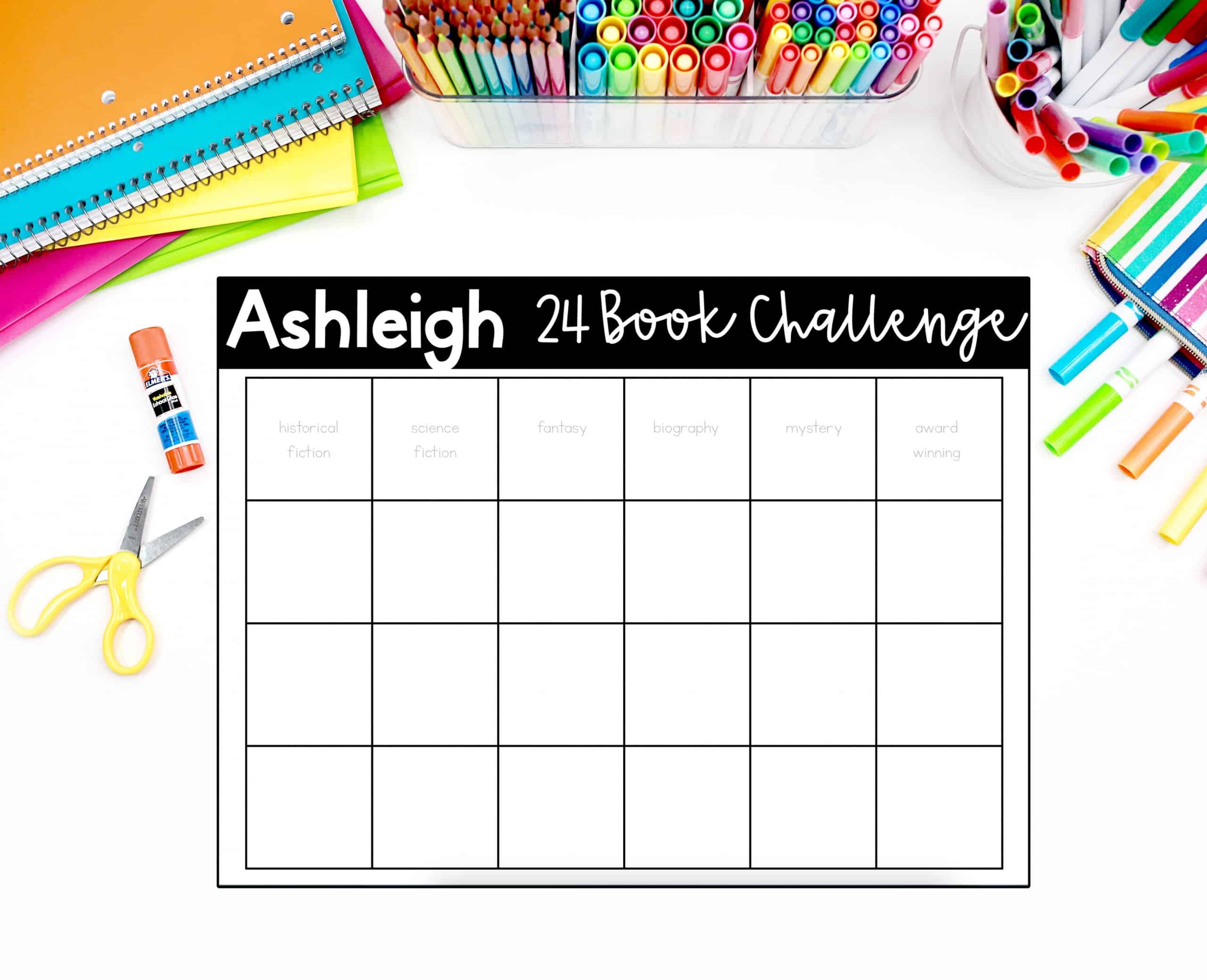
Being that I like to create completely unnecessary work for myself, I print images of the covers of books on stickers for students. It would be much easier to use different colors and color code different genres. I’d love to share my already made labels with you, but I’m fairly confident that would be violating a lot of copyright rules.
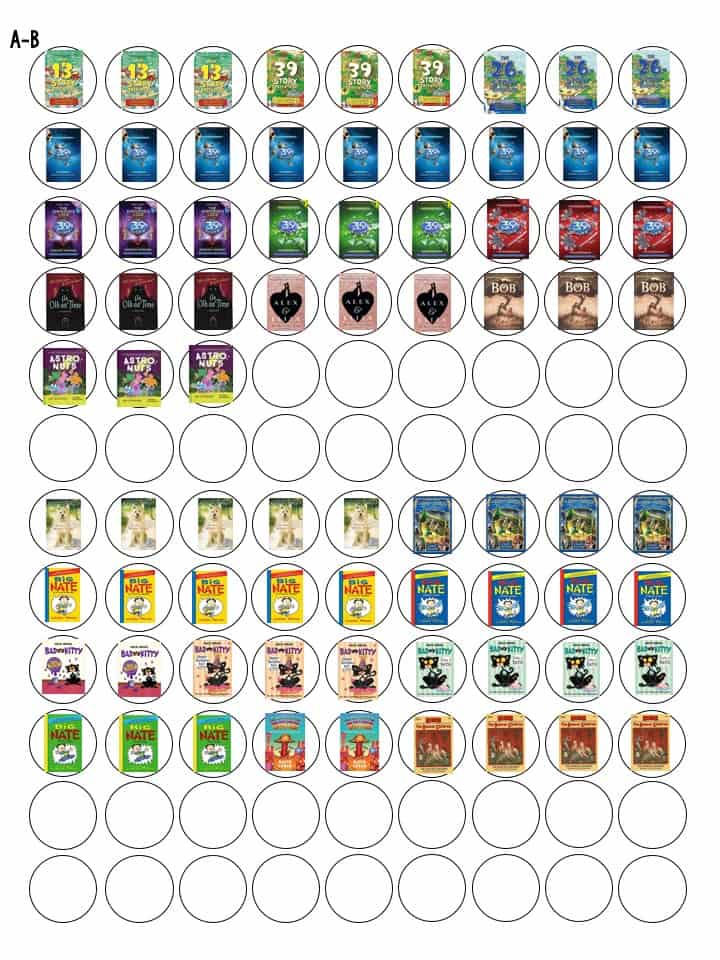
You can download the poster and label here. You can use any font for your students’ names. I used APL Type A Teacher.
It’s hard to think of many reading topics more controversial than Accelerated Reader and similar reading programs. As with most things, it all depends on how it’s implemented. Below are a few things to consider.
- We don’t want our students only reading for points or extrinsic rewards and inadvertently send the message that reading isn’t fun.
- We don’t want our students to not read a book, simply because it’s not AR.
- Avoid limiting students’ level of comprehension to the type of AR questions students encounter.
- It’s important to never turn reading into a chore or punishment.
- Students will learn how to work the system.
All that being said, I can still see some benefits. With larger and larger class sizes and and less and less time, it’s hard to consistently meet with all students individually. I want to …. I really do, but it’s not always feasible. That’s where I see the value of AR or something similar such as Read N Quiz. I use this as a tool to hold students accountable during their independent reading time.
If a student fails a test, I don’t make it a big deal. I use that information to make sure I carve out time to meet the student and discuss the book. There’s a possibility that the student did comprehend the text but didn’t do well on the test. However, there is a possibility that the student needs support in choosing a just right book because the book was far too challenging. There’s also the possibility that the student was pretend reading and more or less turning pages during their reading time without actually thinking about the text. This is when we dig-in and begin to understand the student as a reader.
Whatever your routine is, make sure that you clearly communicate it with students. Otherwise, you’ll constantly hear, “I’m finished!” which is not productive.
Status of the Class
At least once a week, I check in with each student and record the book they are reading. We have a brief conversation about the book, so I can make sure the student understands what they are reading. This also allows me to see if my students are finishing books and how long it is taking them to read a book. If I have a student spend six weeks on one book, then something’s wrong, and we discuss the situation. It’s a highly effective and simple reading accountability tool. This form is also found in my first reading unit.
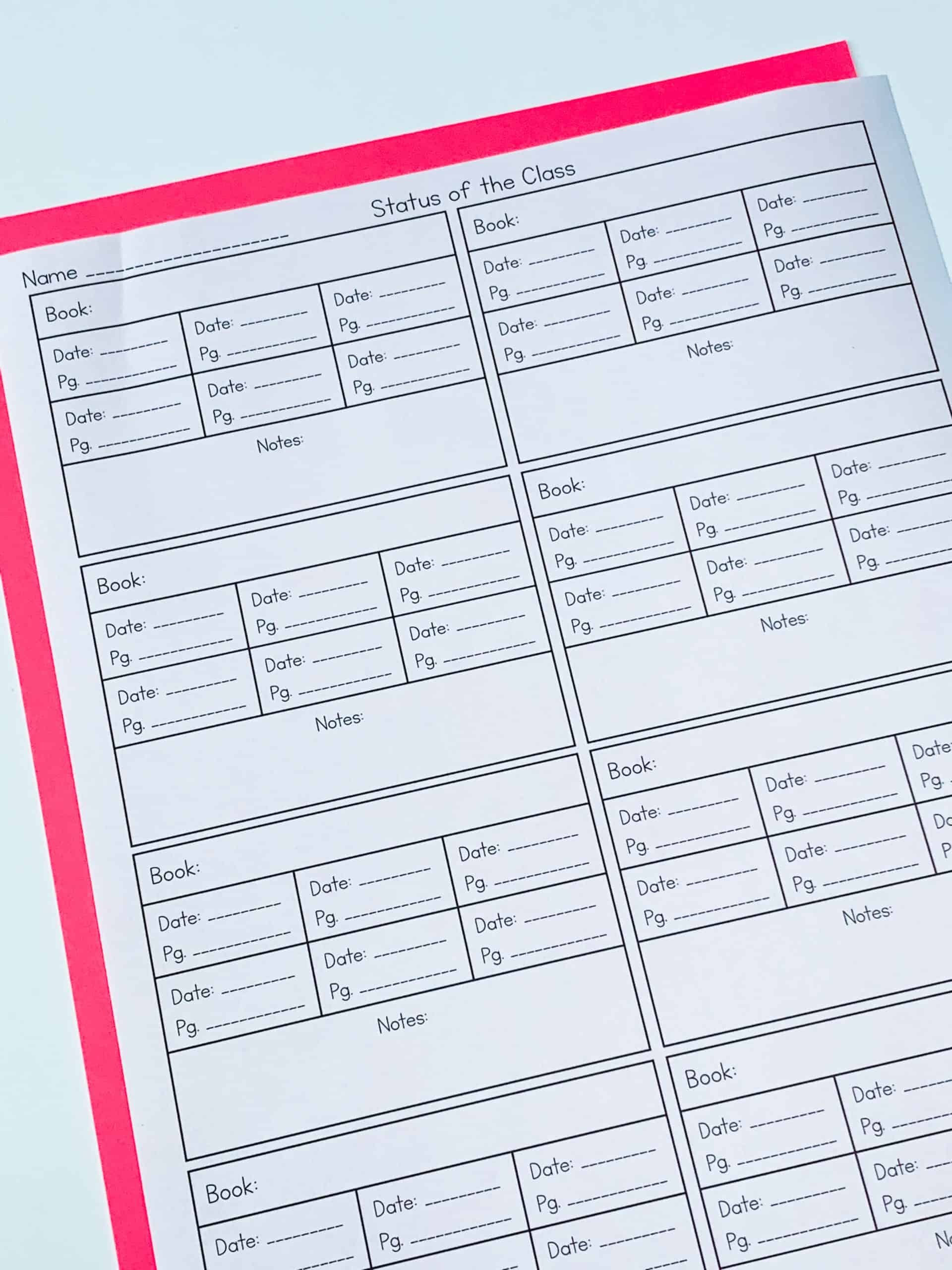 I keep my status of the class forms in my teacher binder. This is on the immediately behind each student’s data/reading profile sheet.
I keep my status of the class forms in my teacher binder. This is on the immediately behind each student’s data/reading profile sheet.
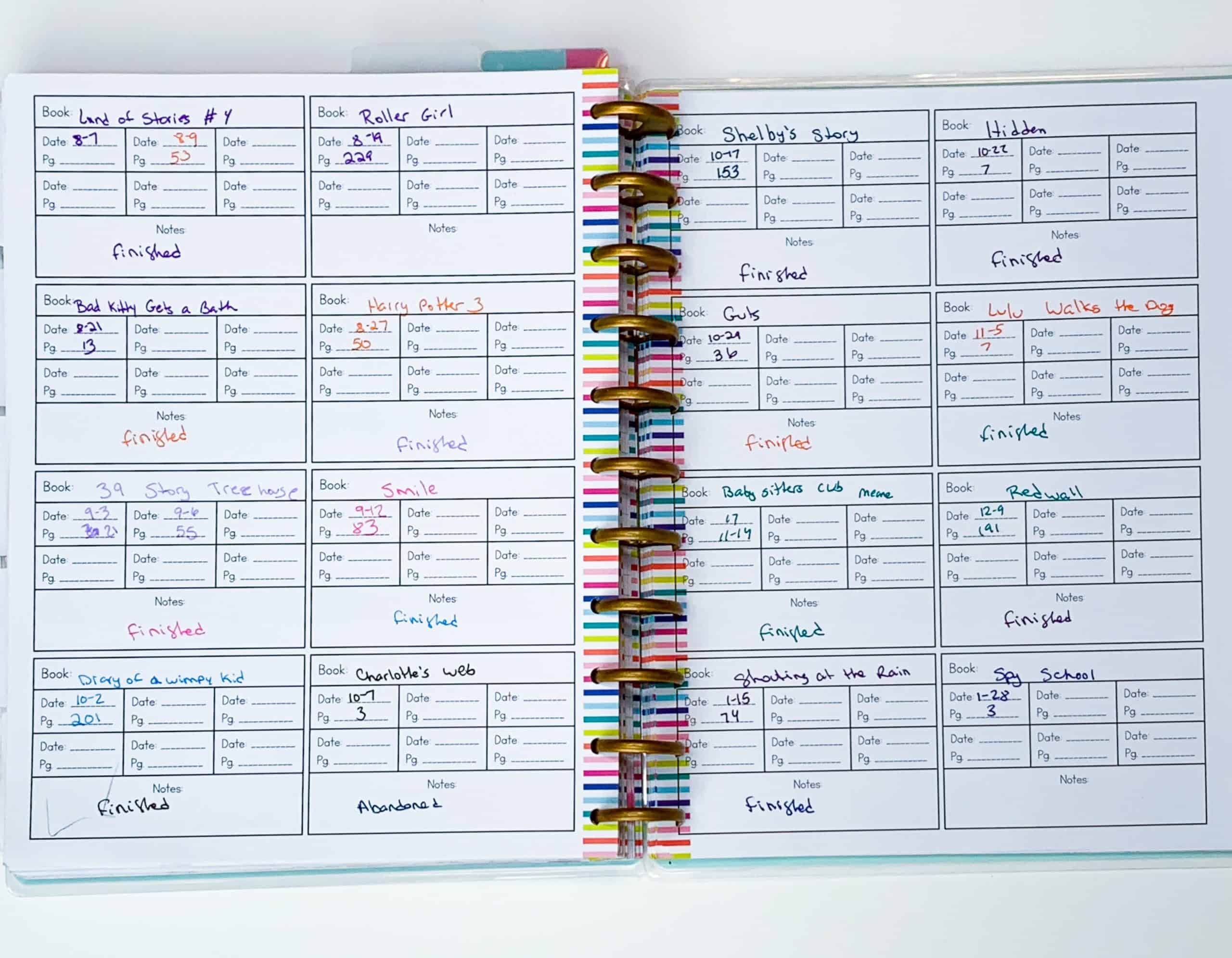
After these lessons, I’m ready to move to more academic content, which I’ll share about soon.



